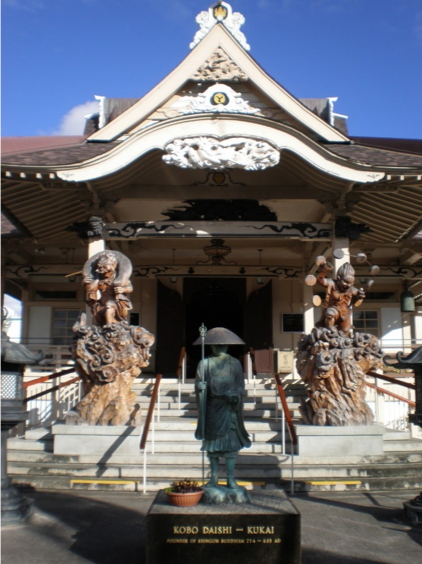Buddhism and WWII
Written by: Ella Wagner

As described in my first post, my work this summer is all about researching and writing about places that tell the stories of the American World War II home front. Last time, I wrote about the histories of conscientious objectors—people who refused military service because of their pacifist religious convictions. This week, I want to share more about the religious dimensions of one of the darkest stories of this period: Japanese American incarceration.
After the Japanese attack on Pearl Harbor in December 1941, President Franklin D. Roosevelt issued Executive Order 9066, compelling the United States government to forcibly relocate and detain about 120,000 people of Japanese descent. About 65% of them were American citizens. Japanese Americans were held in concentration camps across the western states. Several of these sites, such as Minidoka and Manzanar, are now NPS units.
The story of Japanese incarceration is usually, and accurately, told as one of racial discrimination. But religion also played a role. In doing my research, I used the resources of the DOI Library to consult a recent book by the scholar Duncan Ryūken Williams, American Sutra, which illuminates how religious discrimination against Buddhists was an integral part of the incarceration story as well as how the incarceration experience transformed American Buddhism.
I set out to find NPS places related to this history. Fortunately, since several concentration camps are now NPS sites, there are many places that can tell the story of how incarcerated Buddhists adapted their practices to the conditions of camp life. More on that in the future!
But I’m also happy to get to write about some lesser-known historic places connected to this story. One of them is Hawaii Shingon Mission (or Shingon Shu Hawaii), a Buddhist temple that is one of the most outstanding examples of pre-WWII Japanese-inspired architecture in the US. It was added to the National Register of Historic Places in 2002.

Investigating this building, I learned more about what life was like for Japanese Americans in Hawaii prior to and during World War II. The islands hosted an abundance of Buddhist temples and shrines dedicated to different sects; about 85% of Japanese Americans in Hawaii were Buddhists. Temple architecture prior to World War II, as seen in this building, proudly included distinctive architectural elements like sloped roofs. But prejudice against Japanese American Buddhists was also present. Many non-Japanese Americans believed without evidence that Buddhists were more likely to be Japanese nationalists and therefore disloyal to the US government.
As tensions between the US and Japan increased during 1941, the US government compiled a list of suspected “subversives” that included many Buddhists priests. Japanese American Christian ministers were not targeted in the same way. After the Japanese attack on Pearl Harbor, military authorities quickly arrested and detained many of the people on this list. While Japanese Americans living in Hawaii were not subject to removal and incarceration, the islands spent the war under martial law. The military authorities placed restrictions on the ability of Buddhists, in particular, to gather and worship as normal at places like the Hawaii Shingon Mission. Suspicious neighbors even vandalized many shrines and temples in Hawaii. Fortunately, the Mission survived and remains as a testament to the rich and resilient history of Buddhism in America.
Interested in conservation efforts and want to learn about American Conservation Experience? If so, click here to view our programs, including our Conservation Crew and Emerging Professionals in Conservation (EPIC) programs. Click here to view conservation project locations across the United States.